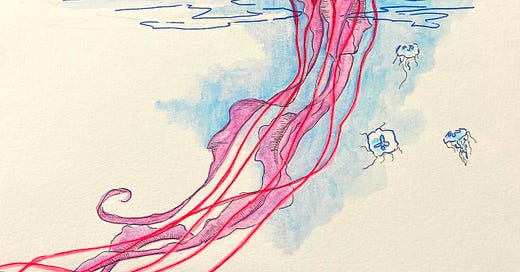Sailing from the Netherlands to the Canary Islands, I’ve entered many ports where marinas are alongside commercial shipping operations. It’s certainly not the glamorised image of sailing life, and it provides a harsh contrast between the sustainability of living small and the scale of global consumerism. Pictures of container ships rarely do them justice because everything looks small in the ocean.

While greenhouse gas emissions continue to grow from the shipping industry, they must decarbonise like every other sector to meet Paris Agreement targets. While marine transport is less polluting than other modes of shipping (like planes), it does contribute to 90% of international trade and is a considerable source of global warming. Therefore, the International Maritime Organisation (IMO) Member States adopted the IMO Strategy on Reduction of GHG Emissions from Ships, including the ambitious target of reaching net-zero emissions “by or around” 2050, shooting for a 40% reduction and a commitment to increase alternative zero and near-zero GHG fuels by 2030. I went to law school, and I think the language on their website does not make clear what they mean by any of this. It is either poorly written or purposefully vague. And for those of you who read this publication regularly, you likely know I’m not a fan of the Paris Agreement (you can read more about what the law considers “sustainable” here.)
But there’s good news on the horizon. Cargo ship designers, perhaps aware of the changing tide in desires for sustainability and renewable energy costs becoming more affordable than oil, are looking to an ancient, free energy source: wind.

In 2023, the first modern sailing cargo ship, Anemos (Greek for “Wind”), departed on her maiden voyage. At 81 meters, the design borrows heavily from ocean-racing sailboats to ensure it catches the wind efficiently. I couldn’t find data on the actual results, but Anemos was projected to reduce its emissions by 95% compared to traditional, oil-fueled container ships. The trans-Atlantic voyage included Canada, New York, Santa Marta, Colombia, Vitoria, and Brazil in an attempt to showcase the ship’s ability to service different markets.

Ideally, this trend of companies returning to wind for cargo ships will continue. And it appears to be doing just that. Anemos is the first of eight sister ships and other companies like Zéphyr & Borée out of Nantes, France, are developing low-carbon transport solutions including the design above, with a heavy load capacity exceeding 1,800 containers. Maritime Executive reported in February 2023 on the expansion of sailing cargo ships, featuring the sleek design of the Ocean Bird (below).
Yet, the most interesting feature thus far is a simple label. Cargo transported on Anemos will have a consumer-facing label with the voyage number, providing people with evidence of a product’s sustainability. Labelling can be very problematic and any glimpse into the supply chain of products is damn near a luxury. If we can maintain transparency through such labels, it could offer people a real chance to vote with their dollar for a more sustainable world—this also requires that corporations don’t hike up prices for the “sustainability” status symbol of the label. (And no, voting with one’s dollar is not equitable, but we do what we can when we can to slowly change the system.)
It also provides an opportunity for us to demand more transparency via government regulations. We can vote for representatives who support limiting imports only to sailing cargo ships (or other low-carbon transport) since it’s becoming widely available.
California is known for voter initiatives making it on our ballot, and with the world’s 5th largest economy, if we vote to phase in such low-carbon transport chains while phasing out high-carbon transport chains, we could rock the world.
Simultaneously, we can organise around shopping locally, borrowing, making, and buying second-hand to reduce the global transportation of goods. The economist theory that hurting global trade will hurt the economy is false: we can strengthen our local communities by keeping our goods and services local, which contributes to the health of the planet.
These are the things I thought about while watching massive container ships, filled with oil and emitting CO2, deliver thousands of the same plastic holiday trinkets to shops in Northern Europe, only to end up in landfills next year in favour of the latest fad. You can see the ships and ports of the North Sea Canal from the perspective of my little sailboat here.
Designers of these wind-powered cargo ships note that the trade winds are consistent. Trade was named after these winds, not the other way around. Of course, since Slow is the New Efficient in terms of saving the planet, I don’t mind if goods move a little slower around the globe.
How does the ecosystem want to support the human life where you live?





great blog.....stay safe...enjoy this amazing adventure....sending hugs